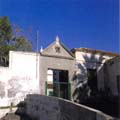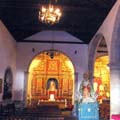History.
 This realm was part of the ancient organisation of Tenerife in pre-Hispanic times. Its mencey, Pelinor, was noted for his loyalty to the first Adelantado de Canarias, the Spanish conqueror don Alonso Fernández de Lugo; who achieved the title of don and was baptised with the name of Diego. He obtained, as well as other lands, some in his old realm.
This realm was part of the ancient organisation of Tenerife in pre-Hispanic times. Its mencey, Pelinor, was noted for his loyalty to the first Adelantado de Canarias, the Spanish conqueror don Alonso Fernández de Lugo; who achieved the title of don and was baptised with the name of Diego. He obtained, as well as other lands, some in his old realm.
His authority was substituted by that of the kings, although the power was delegated to the Marquee of Adeje; they became the authentic owners since the XVII century. They possessed economic wealth (lands, water and a sugar mill) and all the administration was bestowed upon them. The Ponte, a family that deforced the Marquee were also Counts of la Gomera and Lords of part of the Isle of Hierro. They obtained authorisation by licence on may 2nd 1555, to build a strong house (Casa Fuerte) although their petition to convert Adeje into a jurisdictional seigniorage did not come until 1655.
 The church of Saint Ursula was built at the beginning of the XVI century, it had only one hall that then became the actual temple of worship. The Franciscans founded a convent in the XVII century that was a high education centre with a student internship.
The church of Saint Ursula was built at the beginning of the XVI century, it had only one hall that then became the actual temple of worship. The Franciscans founded a convent in the XVII century that was a high education centre with a student internship.
Adeje’s population has been an eye witness to impressive historical changes. From being an eminent fishing and farming town and sustaining a traditional way of life, tourism has become the main economic activity, with the services sector employing most of the population.
Places of historical interest
Ancient Temple of La Encarnación. Today Temple of San Sebastián.
Temple of La Concepción